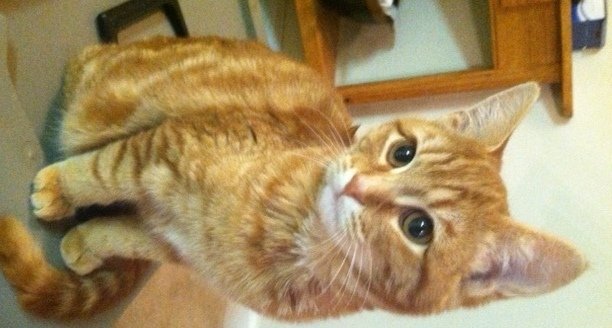Trinity is my newest foster kitty. She is an approximately 8 month old, female kitten. She had a family who left her outside where she was hit by a car about 2 weeks ago. They couldn't afford the surgery to save her so they signed her over the shelter. Our vet removed her left, rear leg and she has been with me to recuperate.
She is a very sweet little girl and handled the surgery well. Her healing went fine and she's recently had her stiches removed. She does still seem sore / bruised in that area but an X-ray showed nothing of concern and the vet believes that it is just injury related to the accident.
I've had other 3 legged fosters before but she seems to be having more trouble adjusting than most which surprised me because of her age (the other tri-pods I've had were several years old, but they both lost a front leg). Any suggestions to help her get used to having only 3 legs? The shelter is being very nice and allowing me to allow her the time to adjust before we put her up for adoption.
She is a very sweet little girl and handled the surgery well. Her healing went fine and she's recently had her stiches removed. She does still seem sore / bruised in that area but an X-ray showed nothing of concern and the vet believes that it is just injury related to the accident.
I've had other 3 legged fosters before but she seems to be having more trouble adjusting than most which surprised me because of her age (the other tri-pods I've had were several years old, but they both lost a front leg). Any suggestions to help her get used to having only 3 legs? The shelter is being very nice and allowing me to allow her the time to adjust before we put her up for adoption.
Last edited:



